Preparing to Reopen: Six Principles That Put Equity at the Core
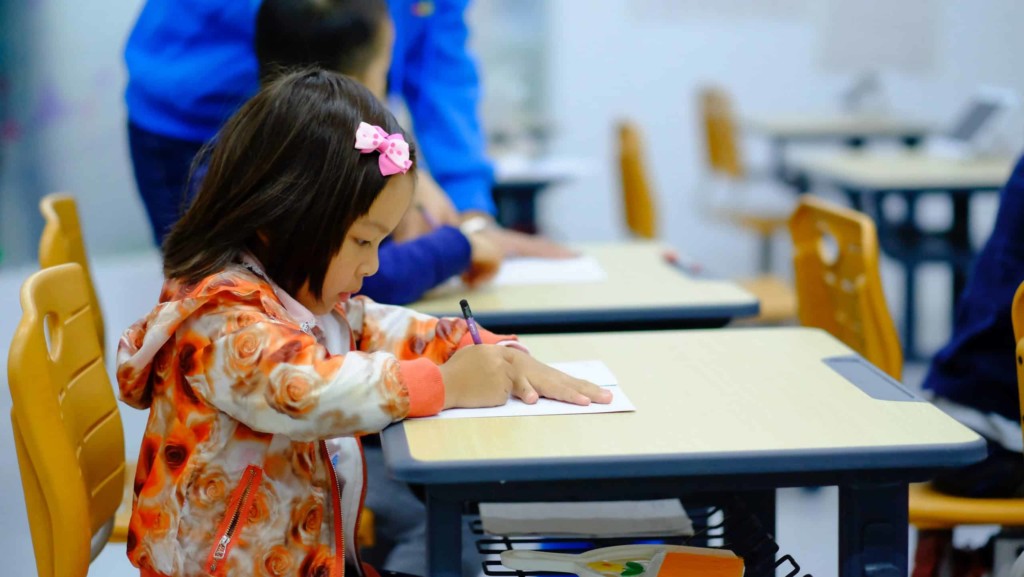
“This pandemic has shaken up the status quo and laid bare a lot of our country’s deep-seated problems from massive economic inequality to ongoing racial disparities to a lack of basic healthcare for people who need it. It’s woken a lot of young people up to the fact that the old ways of doing things don’t work. … Because with so much uncertainty, with everything suddenly up for grabs, this is your generation’s world to shape.”
Former President Barack Obama, Graduate Together, May 16, 2020
In a recent podcast, researcher Brene Brown suggested other fields can learn from the aptly named soccer move “settling the ball.” This technique involves bringing the ball down, getting it under control, and then assessing the field to determine the best play.
The analogy hits home for educators in the COVID-19 world. School communities quickly shifted to remote learning, ensuring basic needs of safety and security in an uncertain time. Now educators face another challenge: getting ready to open schools with looming public health risks, wider learning gaps, and heightened trauma and social-emotional needs. To do this right, we must settle the ball.
How we reopen and recover now will shape public education for years to come. Our mandate is clear: We must prepare in a way that is flexible enough to respond to an uncertain future under COVID-19, yet robust enough to ensure that all students—including students with disabilities—have an equal opportunity to succeed over the long term. Doing so can help ensure that equity is built into the foundation of a new era of education.
As schools rush to make plans in the months ahead, vulnerable students, including those with disabilities and English language learners, are the most likely to be overlooked. They deserve better. Students with disabilities and other special populations should be integrated into every aspect of preparation for the fall to not only ensure their needs are addressed, but to benefit all students, staff, and families. As New Leaders’ CEO Jean Desravines affirms: “If we fail to plan with the most vulnerable students not just in mind, but at the table, we will be stuck with old ways of learning that are both impractical and unsuited to moving us forward.”
Too often in education, we create static plans that become quickly outdated. Preparation, by contrast, anticipates multiple scenarios, accounting for context, conditions, and learning. With a focus on preparation instead of traditional planning, we build the muscles we need to adapt and determine the right next step. With a focus on preparation, we create the processes we need to settle the ball in this pivotal moment; to make critical upgrades for all learners.
The Way Forward: Inclusive Preparation with Equity at the Core
In traditional planning processes, we often design for how the 80 percent of perceived “average” students will be served. We then address the remaining 20 percent—the outliers. While it’s an approach chosen for efficiency, it actually results in time spent retrofitting and/or parallel processes to accommodate those who don’t fit the average mold. As the cartoon below suggests, this creates unnecessary additional effort and stigma and results in suboptimal outcomes for all.
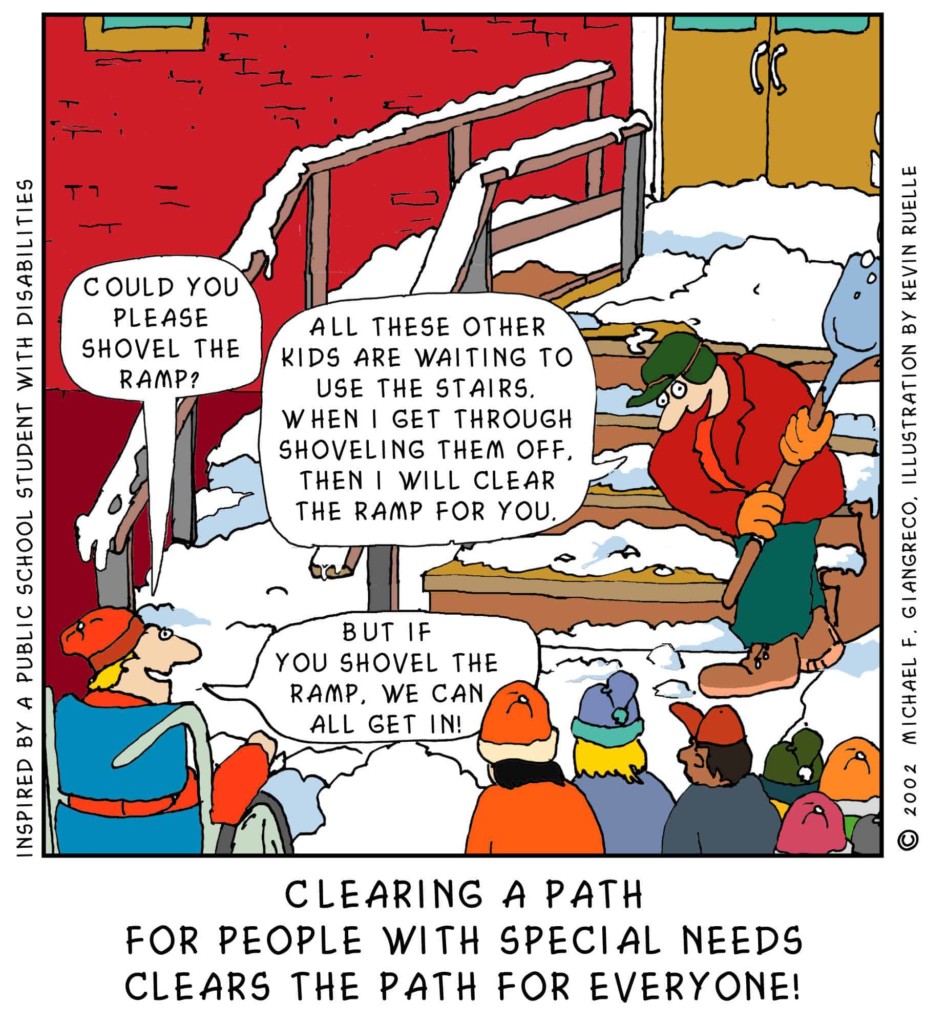
There are six guiding principles we can follow to ensure that equity, empathy, and the needs of students with disabilities are at the core when preparing for the next school year and beyond.
1. First, do no harm.
Ensuring the physical, emotional, and psychological safety of every student must be a priority for all reopening plans. That means systematically considering the heightened risks facing our most vulnerable students and the staff who support them, including those with compromised immune systems, impulse control issues, and the intersection of risks they face due to racial and income inequity. Consider some of the questions our educators and families have presented:
- How will we support students who struggle with attention or impulse control, who may be unable to comply with public health requirements?
- How will we ensure that all students have physical access to the facilities required for safeguarding (i.e. handwashing stations)?
- How can we comply with social distancing requirements if we have a student who requires physical prompts or basic needs such as changing or cleaning?
- How will we stay safe and support students who may struggle with emotional issues, as they potentially experience more frequent or uncharacteristic discipline outbursts?
- How will we conduct speech therapy or work with a student who is hard of hearing when we are all wearing masks? How will students who struggle with social-cognition understand teacher and peer cues through masks?
- How will we find the appropriate balance of distance learning and in-person instruction for students who are medically fragile? How will we protect and care for our own family members who may be medically fragile or on a different schedule?
- How will we ensure safety and learning for students who may have experienced extreme trauma or adversity?
In prioritizing physical and psychological safety, schools may be tempted to find alternate ways to serve vulnerable students, placing the needs of the 80 percent above the needs of the 20 percent “for the greater good.” Diane Howard of the National Disability Rights Network cautions against this. “If schools have a student or students with challenging behavioral concerns, it is not an appropriate plan to place them in an alternative setting because of what we anticipate may happen,” she says. “It is more appropriate to think about what they need and engage in thoughtful planning and mapping out with families and experts supporting the student.”
To abide by this principle:
- Prepare for multiple scenarios in parallel: Prepare to transition students between scenarios of remote learning, blended learning, virtual learning, and/or alternating or parallel waves of each.
- Iterate between external guidance and operational preparations: Preparations should account for special education regulatory guidance, CDC public health guidance, and federal/state guidance, as well as school operations.
- Be open to changing policies that don’t work: Schools are going to have to be flexible and responsive to meet the needs of students and families.
- Create an inclusive culture across locations for learning: When schools reopen, some families may elect to keep teaching their kids at home; it is critical to make them feel as included in the school community as the students who return to classrooms.
- Prioritize mental health and social-emotional supports for all: Everyone has mental health and social-emotional needs, including staff, families, and students. For students, teachers like Juliana Urtubey, a bilingual and special education educator in Las Vegas, recommend incorporating growth mindset and mindfulness practices.
- Emphasize streamlined communications: The leaders at Kingsman Academy in Washington, D.C., suggest creating a “…single support point of contact for each family and student—not a teacher—whose job is to ensure that students have whatever they need, from basic wellness supplies to helping families learn how to troubleshoot technology issues.”
2. Be intentional with seats at the table.
Too often, we make decisions about students with disabilities without students with disabilities. Include a diverse group of students (and those who support them) in ongoing preparation discussions throughout problem identification, solution design, testing of approaches, and reflection and feedback.
To abide by this principle:
- Listen: Conduct empathy interviews, virtual design sessions, focus groups, town halls, and surveys with a diverse range of students, families, and staff. Use these insights both to generate new solutions and pressure-test proposed ones. Brooklyn LAB is releasing early mock-ups of the facility safeguarding plans, to solicit feedback from students, families, and teachers.
- Define success and continuously reflect: Leadership teams can create a set of questions/criteria to return to on a regular basis to ensure they continue to hold these inclusive values at the core, even when it gets hard.
Toni Barton, Dean of Special Education Leadership Programs at Relay Graduate School of Education, urges us each to ask ourselves these questions
- How do my values for equity manifest in this system?
- How am I holding all leaders and teachers accountable for supporting exceptional learners in this system?
- How might we consider student needs as an opportunity to innovate?
- How does the system foster student independence?
- Is the system collaboratively designed?
- How are we allocating resources within the system based on student need?
3. Empower teachers to meet their students’ needs.
In this new normal, teachers are rising to the occasion of the moment and adapting at rapid speed. But, like their students, they need both technical and adaptive emotional support. Students will be returning with even more jagged learning and social-emotional profiles, and they will need additional and tailored support. As the frontline workers providing this support, teachers will need to be empowered with the right tools, learning opportunities, mentorship, and latitude.
Here are some ways to abide by the principle of empowering teachers:
- Provide time for mentoring and collaboration: “We are hearing a lot of concern that there is not enough time to do what we need to do to serve each student well,” says Elisha Smith Arrillaga, executive director of The Education Trust—West. “Teachers need the chance to learn how to effectively implement reopening plans. Adequate preparation will entail giving educators time to think creatively and use new approaches, like starting lessons in the classroom but bringing them to life with engaging, captivating home activities.”
- Give teachers a voice in preparation and planning – and incorporate insights. Close the loop and explicitly find ways to celebrate where teacher voices influenced and shaped preparations. This will create momentum for ownership and problem-solving across the community.
- Engage all students and adults. “The science of learning and development emphasize the cumulative and immediate impacts of experiences and the powerful role of relationships. A commitment to creating equitable learning environments, therefore, requires engaging all students and all adults in the process of examining and improving experiences in and outside of the classroom”, says Karen Pittman, CEO and president of the Forum for Youth Investment. “It isn’t enough to inform students and non-classroom staff about preparations for reopening. We must model a process of trial and error, of respect for science, of active engagement and experimentation.”
- Let teachers know it’s ok to try—and fail: Teachers should be empowered to have a flexible mindset, “…it is okay to not be able to execute the perfect plan right now,” says Emily Fernandez, Chief Schools Officer at Hebrew Public. “We talk a lot about the fact that we might not have an answer for everything, but we have to do something in the meantime to make it better.”
- Give teachers the right tools: Teachers will need tools to address the variation in learning needs and gaps that surface. Consider tools that integrate Universal Design for Learning and learner variability approaches.
If teachers are empowered with the voice and resources they need to support and execute on preparation, they can create reusable and durable processes and resources for their school communities in the process .
4. Apply principles of Universal Design for Learning to the preparation process.
Universal Design for Learning (UDL) is an educational design framework based on learning sciences to develop flexible learning environments and spaces that accommodate individual learning differences. A key element of UDL is analyzing potential barriers to learning based on the learning goals and then designing with those in mind. If you analyze potential barriers for students “at the margins,” you can prepare in ways that are accessible and flexible for all.
Here are some ways to incorporate the principles of UDL in the preparation process:
- Use journey maps for your most complex scenarios: Map out the full school day for these students and staff, including possible scenarios and the barriers these students may face across the intersection of staff, transportation, technology, curriculum, and other systems.
- Use the UDL Guidelines to develop questions: Applying these questions during the preparation process can help you meet the goal of creating expert learners who are purposeful and motivated, resourceful and knowledgeable, and strategic and goal-directed.
5. Privilege what you already know works.
Students will be returning to school with considerable variation in what they learned and retained, with unprecedented, unpredictable learning gaps. The fields of special education and learner variability have developed effective approaches that can be leveraged now. Barbara Pape of Digital Promise’s Learner Variability Project warns against “the paralyzing myth of sameness.” “If we give each student the same books, the same lessons, the same pace, and the same support, we will under-serve nearly all students,” she says.
There are several ways to incorporate what we already know works:
- Embrace continuous cycles of intervention and progress monitoring: Leverage the concepts and training from special education of jagged learning profiles and individual needs, and share associated tools and processes with all staff to diagnose challenges, identify and apply interventions, monitor and adjust to ensure progress. One anonymous paraprofessional describes how trial and error over time allowed professional practice to dramatically improve.
- Create space and time for shared ownership and collaboration: Research shows that there are perceived silos of ownership and expertise between special educators and general educators. Now is the time to create a culture and mindset that all staff have ownership and shared accountability for closing learning gaps.
- Provide individualized supports: “The most effective instruction is instruction that is designed to meet the specific needs of students,” says George Batsche, professor and director emeritus of the Institute for School Reform. “When that happens, students grow and accelerate in their performance more quickly than if we just use generic approaches for kids who are struggling.”
- Partner with families: Family engagement affects student outcomes. Rebecca Eisenberg, a speech and language pathologist, describes her experience supporting a middle school student with complex communication needs and behavioral challenges by partnering closely with his mother. Kareem Neal, a self-contained special education teacher and the 2019 Arizona Teacher of the Year, reflected on how increased frequency and connection to families had improved student engagement.
6. Learn from the bright spots.
Use this moment as a chance to learn. Many school communities have identified improvements in the transition to remote learning that deserve to make their way back into their brick and mortar approach.
Shira Moscovitz, an educator at a New York City public school serving a largely immigrant community, learned that integrating a deeper focus on social and emotional growth with academic content during remote learning supported greater academic growth. “When students feel safe and engaged emotionally, their academic growth will follow,” she says.
Alyssa Boucher, a speech pathologist in Boston, shared her surprise in seeing an increase in effective communication from her kindergarten student with autism during virtual speech and language pathology sessions that utilize resources such as Zoom, online animated story books, and digital manipulatives. Rachel Currie Rubin, a reading teacher and learning specialist in Massachusetts, learned that the online environment allows for multiple ways for students to practice and interact, and may even be better for encouraging some students, like her student with a diagnosis of dyscalculia, to be more independent. Aliza Strassman, an early elementary educator in New Jersey, shared how providing accessibility features and multiple means of expression in her inclusive writing classroom, which “created a sense of community even from afar”.
Here’s how you can incorporate this principle:
- Ask and listen: Take frequent moments to ask your staff, families, and students what’s working. Connect the dots between these reflections, continuously share out and celebrate what you are learning, and integrate into your preparation process.
- Follow the data: Some of your bright spots may be hiding in your data. Look where you are seeing the most attendance and engagement and observe what those teachers are doing. Look at progress toward IEP goals for related services and find out what the therapists are doing to get that progress.
- Look outside your school or district: We are all in this together. At the Educating All Learners Alliance, an alliance of over 45 disability, education, and technology organizations, we are sharing new case studies and voices from the field that demonstrate ways educators have shifted to this new reality.
The Path Forward
As you brace for the months ahead, take a moment to settle the ball. During this period of rebuilding and recovery, we must put equity at the core, not only in initial preparation but in the fiber of all education systems. Retire the plan to the shelf, and instead commit to ongoing preparation that lifts the voices and ideas of the diverse needs of your community. Together, we can ensure learning for all.
For more, see:
- How to Reopen Schools: A 10-Point Plan Putting Equity at the Center
- Podcast: Eric Tucker on Reopening Schools with Equity in Mind
- Educating All Learners During COVID-19: An Alliance Emerges to Provide Support for Virtual Special Education Services
- To Reopen, America Needs Laboratory Schools
Stay in-the-know with innovations in learning by signing up for the weekly Smart Update.
Getting Smart has launched the Getting Through series to support educators, leaders, and families on the path forward during such an uncertain time. This series will provide resources and inspiration as we face long term school closures, new learning environments, and address equity and access from a new lens. Whether you are just getting started with distance or online learning, or you’ve had plans in place and have the opportunity to share your work and guidance with others, there is a place for your voice and an opportunity to learn.
We’re going to get through this together, and we invite you to join us. Please email [email protected] with any questions or content you’d like considered for publication. We also invite you to join the conversation and on social media using #GettingThrough.





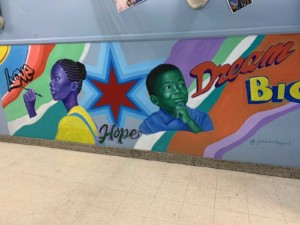
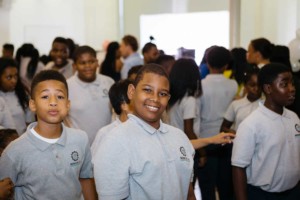
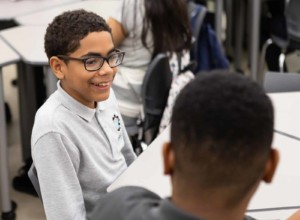
Ruston Slager
Special Education students are currently not receiving a Fair and Appropriate Education. A more practical approach would be to assess whether or not the students and staff are healthy and safe first. After that, let the special education students attend school five days per week as usual with periodic health checks. Keeping special education students at home is not equitable, especially severely handicapped students who cannot participate in online remote learning, or work on any of their behavioral goals while away from school. I realize your guidelines need to appear as positive as possible, but please be honest about the limitations and inequality special education students will have to endure with a remote learning model. Hopefully, the pandemic will decline and high quality education can return to special education in California.